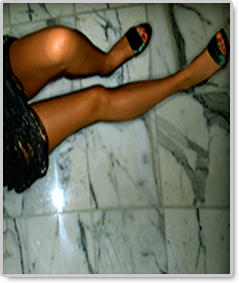Marble Floors: DO's and DON'Ts

DO’s
Sand and grit carried in from outdoors by shoes can easily scratch and grind your marble floor's surface like sandpaper. To prevent dirt, water, and road salts from getting to your marble floors, you should place large mats with waterproof backings at all entrances to your home (helpful accessory: doormats with waterproof backings). In particular, you will want to catch road salt, which can dissolve and pit your marble’s surface.
You should also protect your marble floor by placing rugs in areas of high traffic. And furniture legs that come in contact with the marble floors should be fitted with special felt pads or plastic floor protectors. And any houseplants should be placed on a special base or stand to prevent deep stains and scratches (helpful accessory: plant mats).
And if any liquids are spilled on your marble floors, quickly remove the spill by blotting with a paper towel (helpful accessory: plastic floor protectors). But do not wipe, since wiping will spread the spill.
DON’Ts
Marble floor tiles are porous and can easily be discolored by spills from food, oil, ink, water damage, etc. Don’t allow any liquids or foods containing acid to be spilled onto your marble floors. These can etch or leave dull marks on marble surfaces. Examples of acidic liquids are lemon juice, orange juice, carbonated beverages, cranberry juice, apple juice, wine, tomato, etc.
The use of detergents for routine cleaning is not recommended as they tend to dull polished stone and many contain chemicals that are harmful to your marble’s finish. Cleaning detergents which contain acid can cause etch marks and stains on your marble. Examples of these are tile cleaners, vinegar, Ajax, Soft Scrub, etc. And cleaning solutions that contain high alkaline levels or bleach can also damage marble floors and cause it to lose its shine.
Avoid dragging heavy objects or leaving sharp items on the floor, as these can cause deep scratches or gouges that are permanent. And do not allow your marble to come in contact with materials that can stain the surface, such as items made of iron, bronze, copper, oil and grease, ink, tobacco, and smoke.
Tap water can also damage a marble floor. Local water could contain chlorine, salts, magnesium, potassium and other minerals. When water is used regularly to clean a marble floor, it may ruin certain types of marble by causing pitting, spalling and yellowing.
And never attempt to remove stains or deposits by scraping, scouring, or indiscriminately applying bleaching agents, liquid marble cleaners, or other harsh chemicals.
RECOMMENDED CARE
Always use the gentlest means possible to clean your marble floor. You should keep your marble floor routinely clean of superficial dirt by using a minimum amount of plain warm water and a cotton string mop (but remember the problems with using regular tap water that we described above). And be sure to only use neutral cleaners or stone soap liquid specifically designed for natural stone, that will not harm the surface or erode its luster (helpful accessory: marble floor cleaners).
Damp mop the floor regularly to remove dirt and soil. Frequent mopping will help prevent soil from penetrating the surface. Use only cold or warm water that is clean. Do not use hot water since this will cause the marble floor tile to streak.
For general griminess, add a very small amount of ammonia to water (so little that you can’t even smell it). Alternatively, you can use extremely dilute solutions of a mild, neutral pH detergent such as dishwashing liquid. But first be sure to test it on a small area of the marble, that is in the least noticeable area.
If your marble tends to streak when you mop the floor, try drying the marble with a clean terry cloth towel or buffing with a residential buffing machine.
And finally, if your marble floor is scratched, deeply soiled, or has a build-up of yellowed wax or discolored sealers, then the luster and natural color can be restored by wet sanding and chemical stripping by a professional.
Related Articles . . .
Bathroom Makeover Ideas
Here are ideas for making over your bathroom that will add new features, save energy and water, improve health and safety, make it more beautiful, and help better meet the special needs of the elderly.
Caring For Your Fine Wood Furniture
Fine wood furniture is expensive and has many enemies. To protect your fine wood furniture and keep it looking nice for many lifetimes, here are the things you should do to protect and care for your furniture.
Making Your Leather Furniture Last
Leather furniture is a gorgeous addition to your home, and with the proper care, it can last a lifetime. This article describes how to protect your leather furniture; how to properly clean it; and when repairs are needed.
An Allergy Sufferer's Guide to Carpet Care
If you or someone in your family suffers from allergies, here are some tips to help make your carpeting less of a burden on allergies. This article covers tips for vacuuming, cleaning and replacing your carpets.








